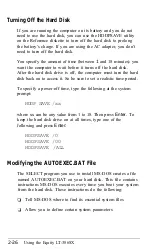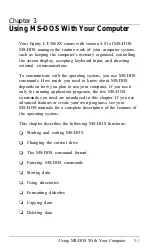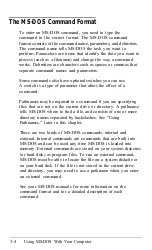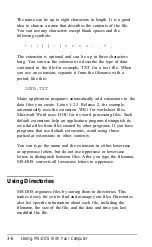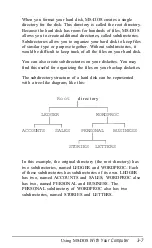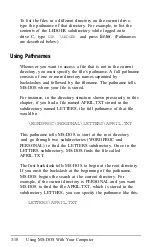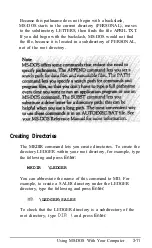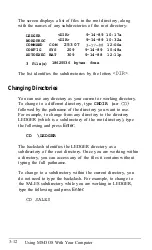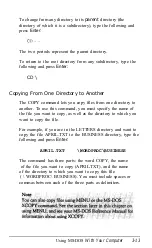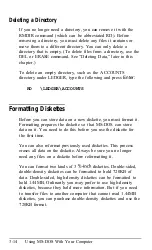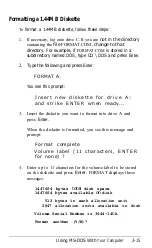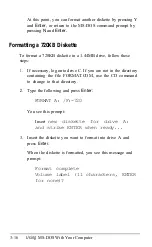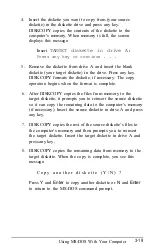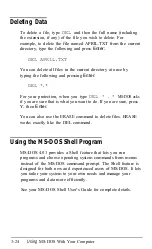
To list the files in a different directory on the current drive,
type the pathname of that directory. For example, to list the
contents of the LEDGER subdirectory while logged onto
drive C, type
DIR
\
LEDGER
and press
Enter.
(Pathnames
are described below.)
Using Pathnames
Whenever you want to access a file that is not in the current
directory, you must specify the file’s pathname. A full pathname
consists of one or more directory names separated by
backslashes and followed by the filename. The pathname tells
MS-DOS where your file is stored.
For instance, in the directory structure shown previously in this
chapter, if you had a file named APRIL.TXT stored in the
subdirectory named LETTERS, the full pathname of that file
would be:
\WORDPROC\PERSONAL\LETTERS\APRIL.TXT
This pathname tells MS-DOS to start at the root directory
and go through two subdirectories (WORDPROC and
PERSONAL) to find the LETTERS subdirectory. Once in the
LETTERS subdirectory, MS-DOS finds the file called
APRIL.TXT.
The first backslash tells MS-DOS to begin at the root directory.
If you omit the backslash at the beginning of the pathname,
MS-DOS begins the search at the current directory. For
example, if the current directory is PERSONAL and you want
MS-DOS to find the file APRIL.TXT, which is stored in the
subdirectory LETTERS, you can specify the pathname like this:
LETTERS\APRIL.TXT
3-10
Using MS-DOS With Your Computer
Summary of Contents for Equity LT-386SX
Page 1: ...EQUITY LT 386SX User s Guide EPSON ...
Page 3: ...EPSON EQUITY LTT M 386SX User s Guide ...
Page 183: ... No codes Ignored D 42 System Diagnostics ...
Page 184: ... No codes Ignored System Diagnostics D 43 ...
Page 189: ... No codes Ignored D 48 System Diagnostics ...
Page 190: ... No codes Ignored System Diagnostics D 49 ...
Page 192: ... No codes Ignored System Diagnostics D 51 ...
Page 193: ... No codes Ignored D 52 System Diagnostics ...
Page 194: ... No codes Ignored System Diagnostics D 53 ...
Page 195: ... No codes Ignored D 54 System Diagnostics ...


